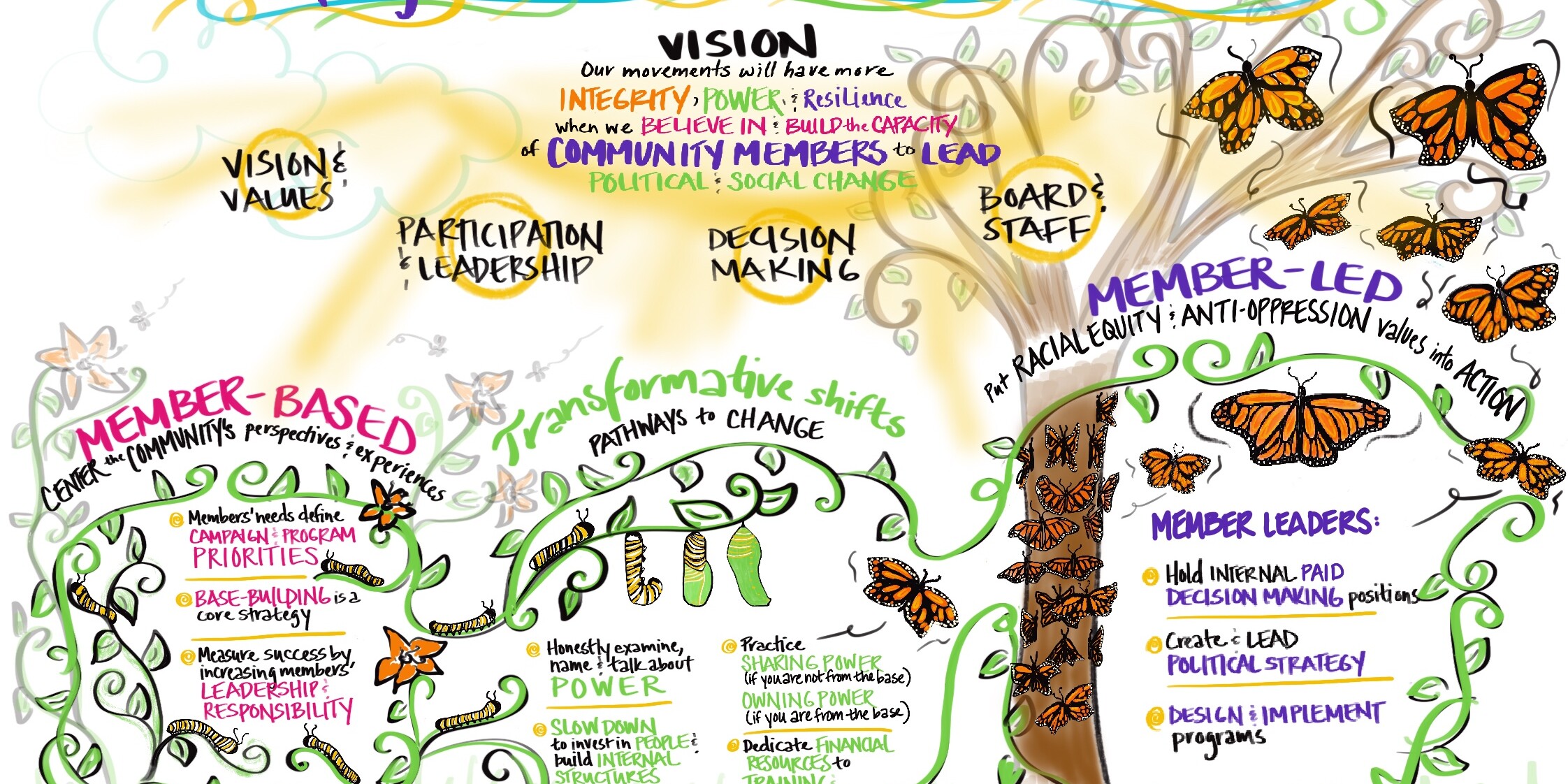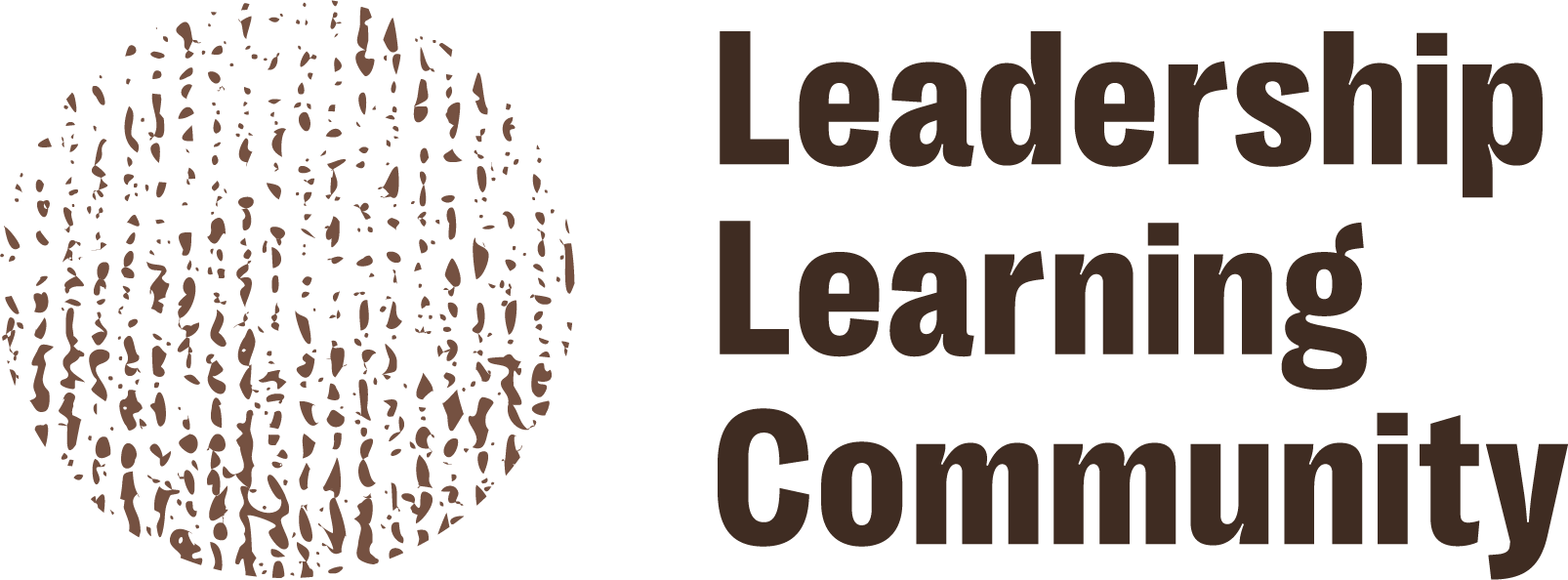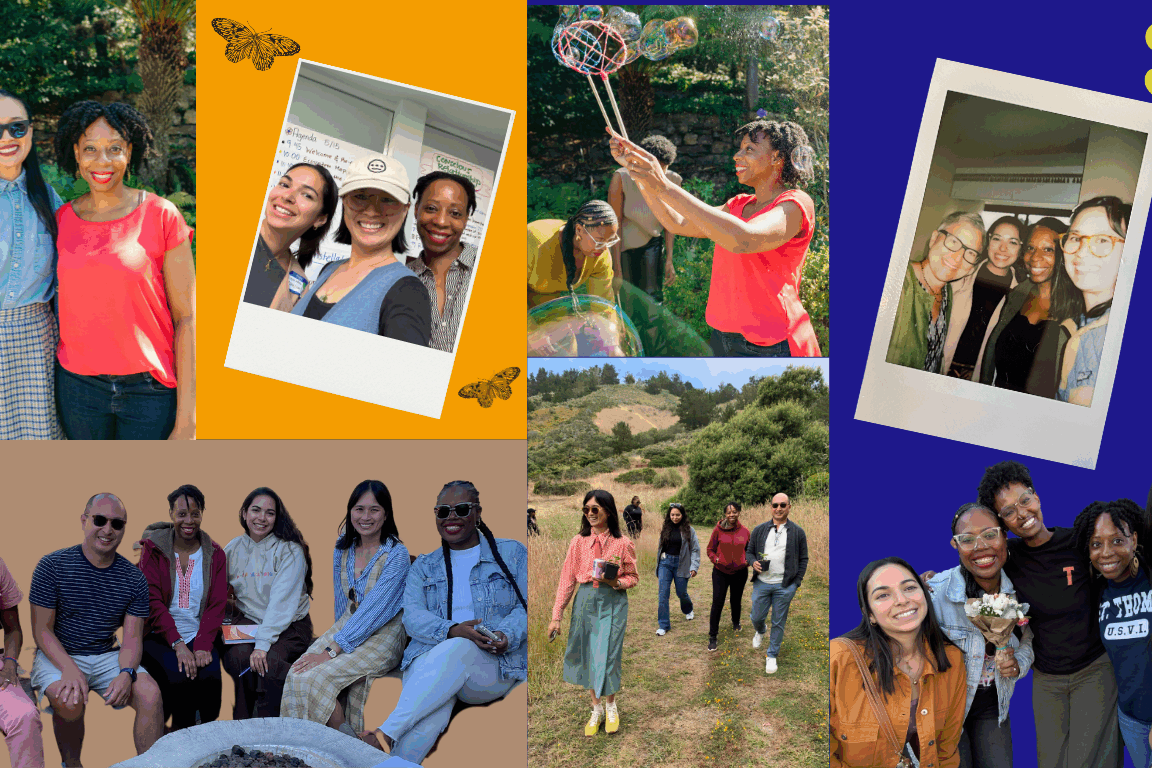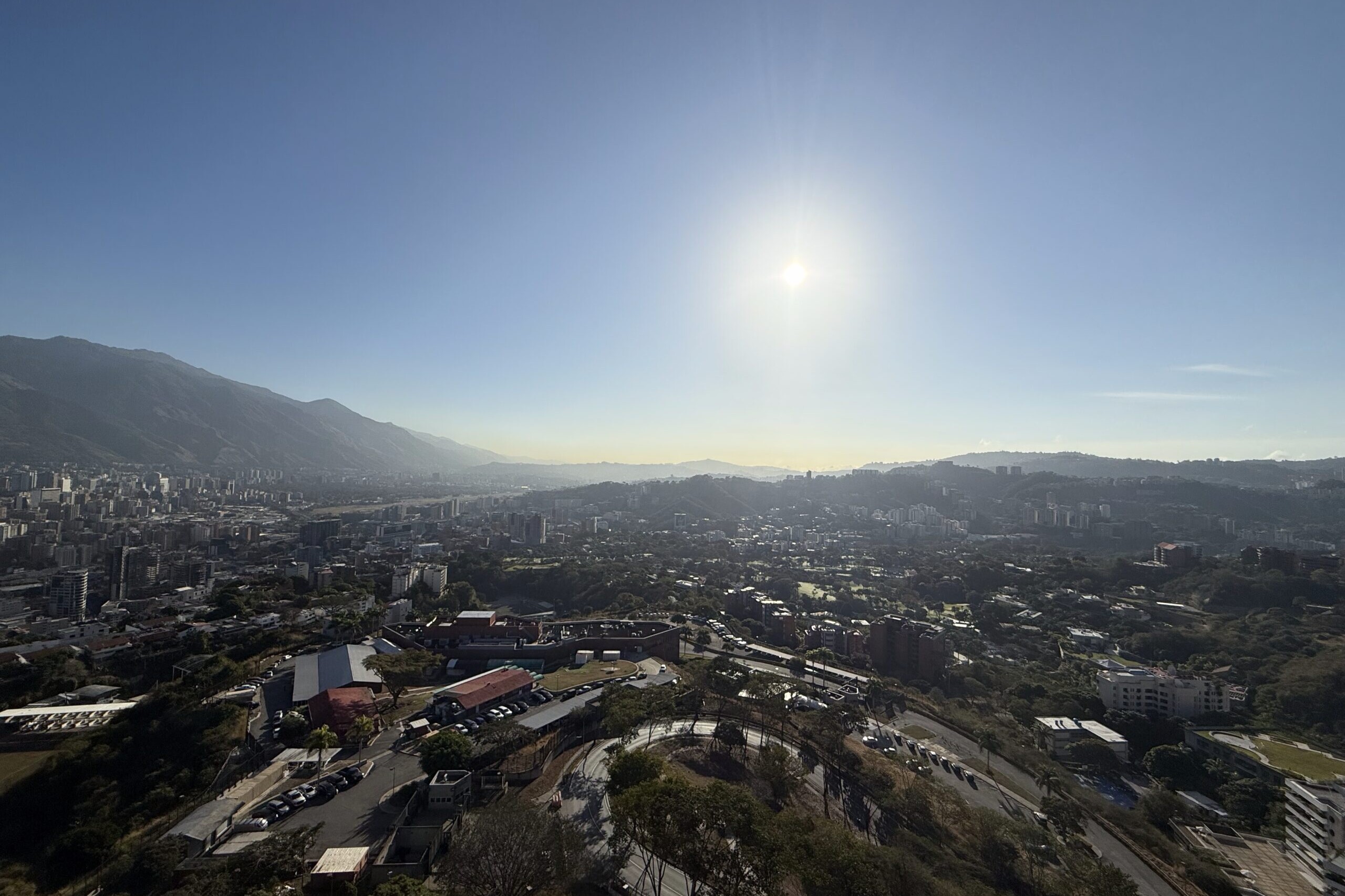
Perhaps because my background is in organizing and advocacy for me, the purpose of my work supporting leadership is to shift power. Looking at who has power and who doesn’t and then shifting that balance.
I think we accomplish shifting power by creating opportunities for people with less power, marginalized and directly impacted people, to have real power over the conditions that impact their lives, not just “a voice” that power-holders can choose to hear or not. If we build leadership support structures that value equity, we must intentionally assess and question how power and authority are distributed in our society and our institutions.
Last month, on June 20th, LLC had the great fortune to host a bilingual (English/Spanish) conversation with Mujeres Unidas y Activas (MUA). An organization that has wrestled directly and successfully with the issue of shifting power. If you were not able to join the webinar, I encourage you to check it out here. MUA is a grassroots organization of Latina immigrant women in the San Francisco Bay Area with a dual mission of personal transformation and building community power for social and economic justice.
For MUA, shifting power toward those who previously had less power was to become a member-led rather than a member-based organization. Through this process, MUA became an organization led by, rather than influenced by, the directly impacted people who make up MUA’s base. MUA is just one of many organizations wrestling with this issue. However, their innovative and potentially replicable model has much to learn from during the webinar. Juana Flores, MUA’s Executive Director, and Lourdes Reboyoso, MUA’s Grassroots Fundraising Coordinator, shared key takeaways from their recently released report: Shifting power from the Inside Out: Lessons on Becoming Member-Led from Mujeres Unidas y Activas.
While acknowledging that this is an ongoing process, MUA has already seen tremendous success in shifting toward a more member-led institution that lifts the voices of directly impacted people:
- 80% of staff are Latina immigrant women (MUA’s core base demographic)
- 60% of staff joined MUA as members and developed their leadership on member committees before being recruited to join MUA’s staff
- 70% of Board members are MUA members
- 50% of the management team started as MUA members
What it takes to shift power
A key component of MUA’s transformative process is the development of “Futuro Fuerte / A Strong Future,” a program designed to prepare both the membership base and organization to become member-led, strengthening the capacity of MUA members and implementing new internal practices.
Futuro Fuerte incorporated individual and collective skills training to help MUA members learn and refine their capacities related to operating an organization. But leadership isn’t just about skills. Suppose we are attempting to develop leadership practices that counter power imbalances. In that case, it is essential to note that it may be hard for folks who have historically been denied access to power to immediately feel good about accepting power. Some may have negative feelings about power, perhaps associating it with oppression and abuse or viewing it as the purview of an exclusive few. So we must support people as their thoughts about power evolve. Several MUA members reported not feeling like they could or should hold positions of power, particularly outward-facing jobs. Some initially felt those roles could only be held by English-Speakers, US-born folks, or those with more extensive educational backgrounds. Therefore, MUA’s approach to shifting power needed to pay attention to the internal lives of MUA members, incorporating personal transformation work. After participating in Futuro Fuerte, MUA members could better recognize the skills and capacities they already possessed and, most importantly, their legitimate right to hold power.
There is, or should be, a close relationship between power and accountability. Accountability entails defining to and by whom an organization will be held accountable. Engaging directly impacted people is one way of ensuring an effort moves in the right direction and addresses the conditions it is trying to change. There is a greater sense of accountability when the people directly impacted by an issue determine the response to that issue. This requires a substantive transfer of power and authority. MUA did that; as stated above, most of MUA’s staff, management team, and board are or started with MUA as members. At MUA, directly impacted women are not merely represented but make strategic decisions for the organization.
This really matters! The structure of our organizations should reflect the vision of the world we are trying to create. Our institutions must also do so if we aim to correct power imbalances in the broader society. As Juana Flores explains, creating opportunities for directly impacted people to practice leadership in our organizations supports their efforts to have an “external political role” and exercise power more broadly.
How to Shift Power – My 7 Key Takeaways
MUA’s report and the LLC webinar offer numerous ideas for practicing being member-led and shifting power to directly impacted people. Here are the seven that were most resonant for me:
- Make the commitment: MUA’s board and staff are committed to a transformative process, overcoming personal fear, trepidation, and prohibitive institutional systems.
- Create space for learning: Because being truly member-led is fundamentally different from the way most organizations are structured, MUA spent time exploring how they wanted to function as an institution, utilizing trainings, learning circles, retreats, coaching, mentorship, and individual, group and peer learning, as well as hiring outside consultants.
- Invest in internal capacity: For this transformation to be sustainable, MUA was careful to ensure they were not overly reliant on external support, instead investing heavily in building the internal ability to carry out the work.
- Establish new internal practices: To realize its goals, MUA instituted new policies and operating procedures to ensure that its day-to-day practices aligned to become member-led. This included personal and professional staff development, hiring, and supervising practices. For example, it was rethinking how the organization deals with staff and members in crisis.
- Utilize valuable tools and materials: MUA incorporated new tools to help the team operationalize the organization’s goals to support staff attempting to align with new practices.
- Communication: Shifting power can be a slow and iterative process. It involves unpacking commonly and closely held beliefs and having challenging conversations. Consistent communication, as well as a commitment to positive and productive communication, is essential. MUA dedicated significant time to internal conversations and established communications guidelines supporting their efforts to shift power while maintaining community cohesion. In this video, Yael Falicov describes learning to be aware of how she showed up at MUA and her impact on others, ultimately learning to choose “relationship over task.”
- Invest in transformation: One of the most critical takeaways from our conversation with Juana and Lourdes is the degree to which MUA invested substantial resources into the transformative process. This investment entailed both time and money. The support of forward-thinking funders who provided dedicated funds to advance MUA’s efforts to become member-led was essential. If folks reading this take away nothing, I hope they remove the importance of making real investments in developing grassroots organizations. Transitioning to a member-led organization requires tremendous staff time, material resources, emotional labor, and external support. Grassroots organizations shouldn’t be forced to attempt this massive undertaking on the cheap.
Shifting power is a lot easier to blog about than it actually does. As the MUA example illustrates, shifting power to directly impacted people requires much more than desire; it also requires true institutional commitment, comprehensive technical assistance, capacity building, significant dedicated financial resources, and a great deal of time, as well as the flexibility to be responsive to conditions on the ground. If we are to contest inequity, we must direct sufficient resources to support the leadership of those most impacted by injustice.
To learn more about MUA’s path toward becoming member-led, check out these six short but powerful short videos.




